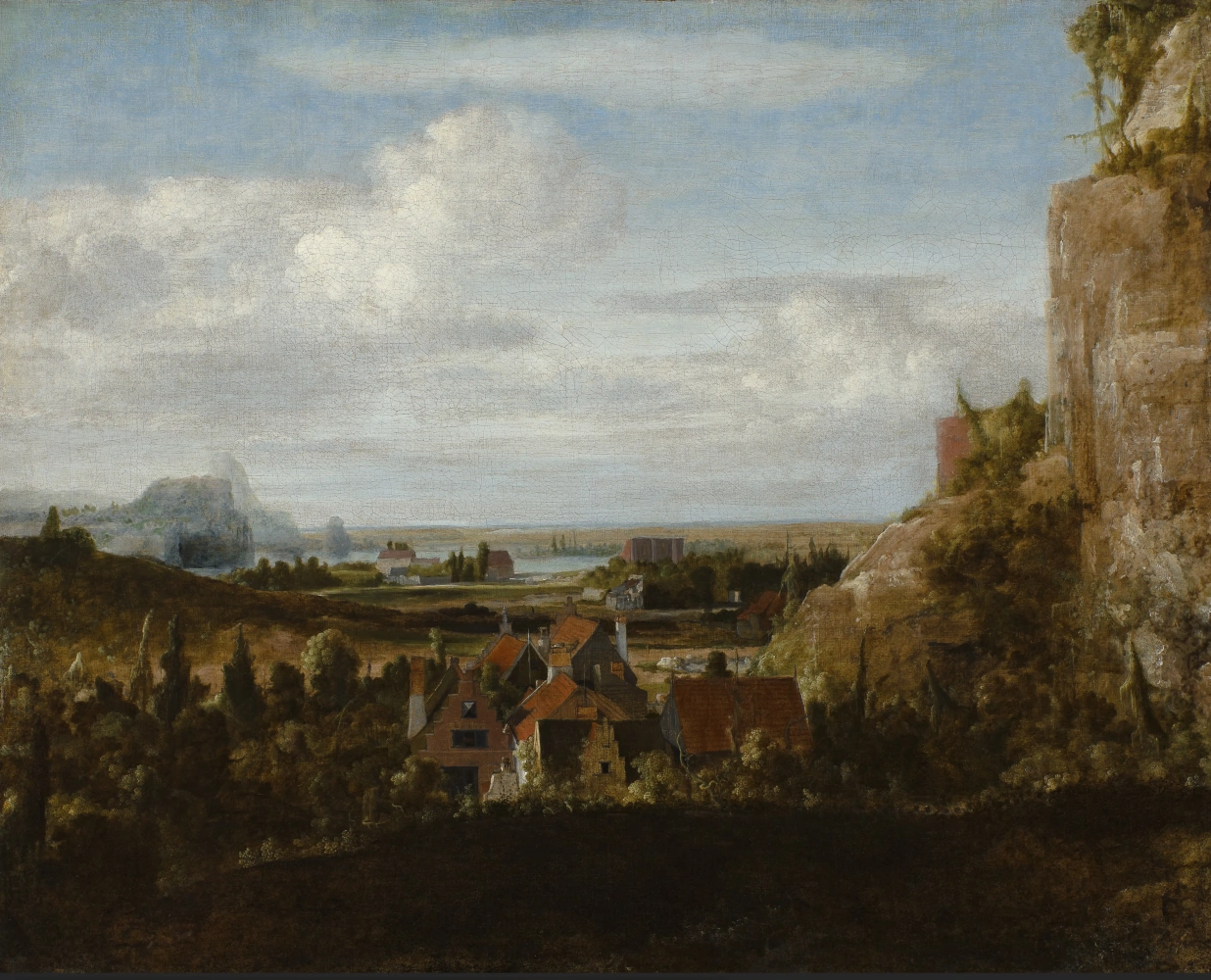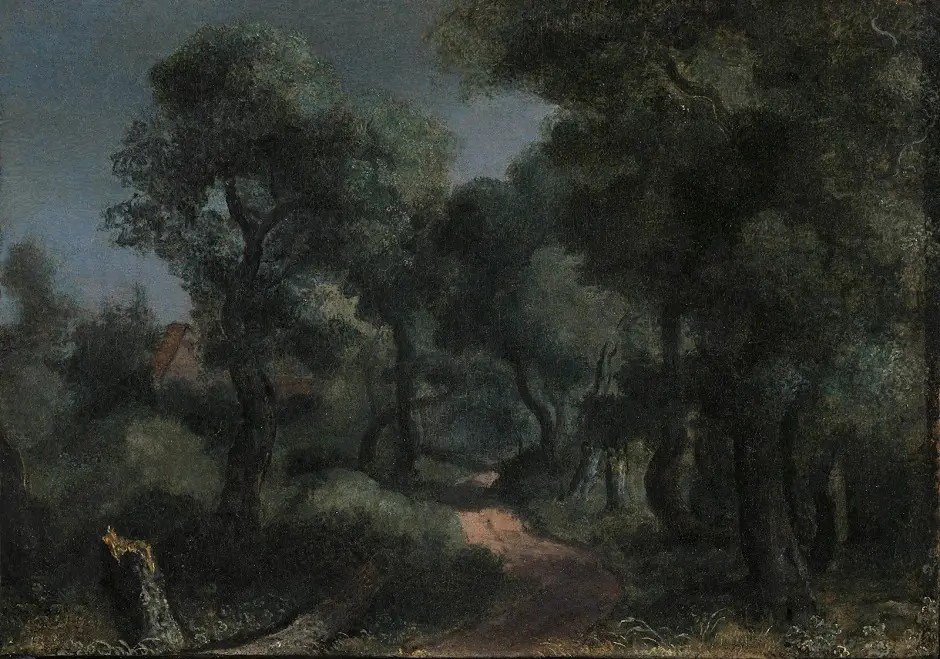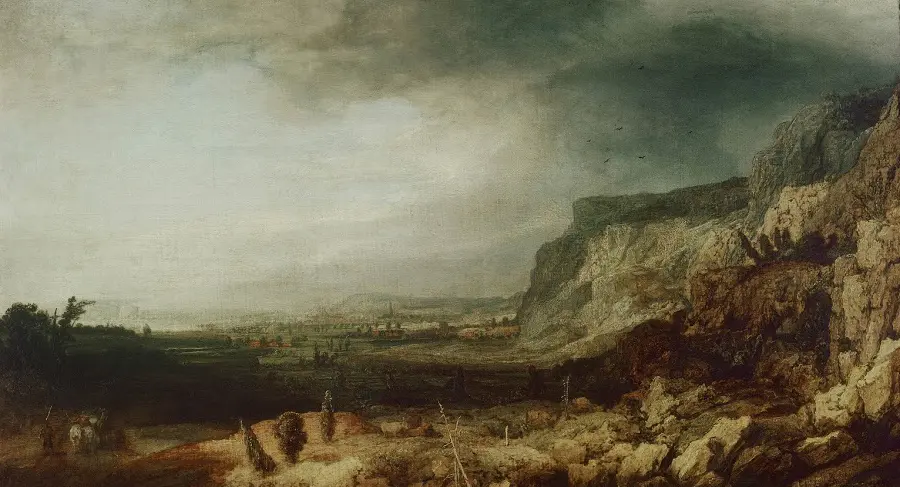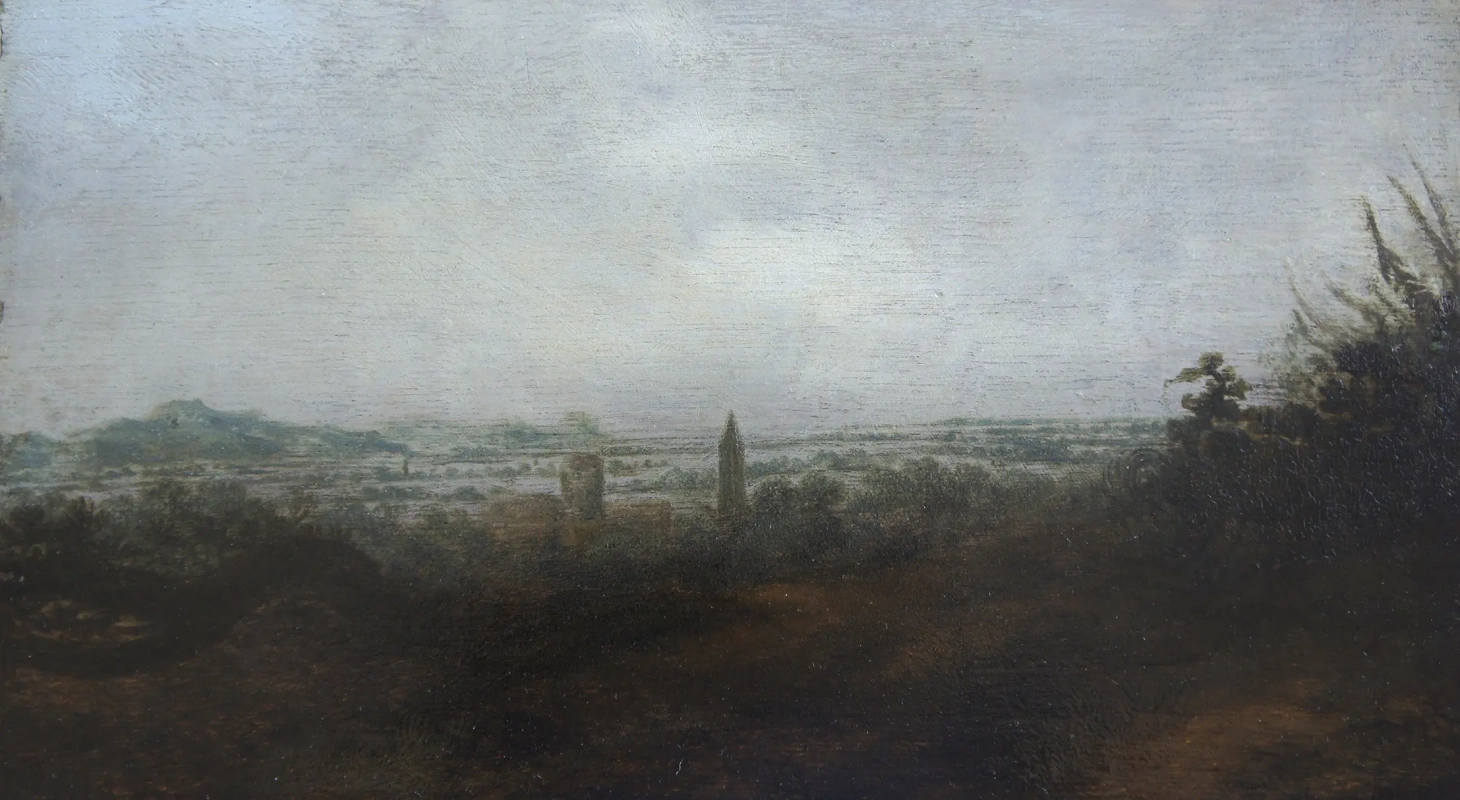The Metropolitan Museum of Art is hosting the exhibition dedicated to Hercules Segers, the man whose work was deeply respected by Rembrandt van Rijn. This is the first major exhibition in the United States devoted to the artist, who possessed one of the most fertile creative minds of his time.

Houses near Steep Cliffs,
Hercules Segers
Oil on Canvas,
Museum Boijmans Van Beuningen,
Rotterdam
Hercules Segers
Oil on Canvas,
Museum Boijmans Van Beuningen,
Rotterdam
Lost Paintings
Hercules Segers (1589/90 — 1633/40) was a Dutch painter of the Dutch Golden Age. He was praised as one of the most talented artists of his time. Comparison with Albrecht Dürer or Leonardo da Vinci shows that he was their equal, a man who possessed a great power of imagination.His work is unique because the landscapes on his paintings are not copied from the scenes he had seen, they came from his visionary mind.
The Metropolitan Museum of Art has the exhibition on view from February 13 through May 21, and right before its opening two major European cultural institutions in Amsterdam were paying homage to this great artist whose work influenced printmakers and painters through centuries. During the last three months of 2016 Rijksmuseum and the Rembrandt House Museum displayed the complete work of Hercules Segers and explored the influence he had on other artists.

Panoramic Landscape
with a Town on a River, Oil on panel, c. 1625−1630
Until this point, only 12 of his paintings were known to exist. During the process of preparation for the exhibition in Rijksmuseum, researchers were able to attribute six more paintings to Segers, which brings the number of his paintings, that we know of, to 18.
General Director of Rijksmuseum said, "Very seldom can one add so many new paintings to such a small oeuvre. It is truly fantastic that we can show so much unknown work by this most innovative artist of the Golden Age in the exhibition!"
On the images above: Mountain Landscape
with Panorama, 1620−25. Oil on canvas applied to wood; Panoramic Landscape
with Two Towers, Oil on panel, 1625−1630; Woodland Path, canvas on panel, 1618−20.
Segers and his contemporaries
Hercules Segers was a man of his time, who specialized in a relatively novel technique of printmaking. He was best known for his printed paintings which had a stunning amount of details. He was a member of the painters guild in Haarlem which gave him the status of a highly esteemed artist whose work had value on the art market.

River Valley with a Waterfall,
Hercules Segers,
1621−1632,
Lithography
Hercules Segers,
1621−1632,
Lithography
Among the 17th century famous artists influenced by Segers is the greatest name of Dutch painting Rembrandt Van Rijn. The artists shared an interest in printmaking, but more importantly there are historical records that prove that Rembrandt owned 8 of Segers’s paintings. The Hercules’s influence can be seen in the way Rembrandt composed his paintings.
''It is interesting that Rembrandt, like Segers, experimented with different supports: European paper, vellum, cartridge paper and, from around 1647 onwards, Japanese paper''
The centuries of oblivion
We forget, that is a fact of life. Memory is valuable because it gives us the insight into the lives of those who lived before us and allows us to understand the past. This understanding of the times that are long gone enables us to forge our own future based on the experiences of the generations that belonged to other eras that seem distant today. Although the information about Segers’s life is scarce, we know that he died in bitter poverty.

View of Wageningen from the Northeast,
Hercules Segers
Hercules Segers
oil on panel,
1628−1630,
National Gallery of Scotland,
Edinburgh
1628−1630,
National Gallery of Scotland,
Edinburgh
''One evening he came home drunk, a state to which he was not accustomed, and fell down the stairs and died. His death opened the eyes of all the art lovers, who have since then accorded his works the esteem they deserve, and always will deserve.''
In the years after his death, Hercules’s work progressively lost its value, until the point when nobody even knew who he was. It is a strange play of fate, that such a great mind was to be forgotten so soon. It will take more than 200 years for Sager’s work to regain the status it once had in the world of art.
In the years after his death, Hercules’s work progressively lost its value, until the point when nobody even knew who he was. It is a strange play of fate, that such a great mind was to be forgotten so soon. It will take more than 200 years for Sager’s work to regain the status it once had in the world of art.

View of Rhenen from the North, Oil on panel, 1620−1630
Avant-Garde art and the magical world of Hercules Segers
The reemergence of the Dutch genius slowly started at the beginning of the 20th century, Hercules’s work became more and more popular among printmakers, because they praised the complexity of his prints. Soon, many museums became interested in acquiring his work, but finding his prints or paintings was not such an easy task. Many of the 20th-century artists have studied his work and cited Segers as an artist whose work left a significant mark on them.
His works appear so much out of their time that filmmaker Werner Herzog incorporated details of Segers’s landscapes in a piece—titled Hearsay of the Soul—that he created for the 2012 Whitney Biennial.
As the film director Werner Herzog explained,
''The most remarkable and really frightening thing about Segers is his modernity, his stimulating courage to take risks''
''The most remarkable and really frightening thing about Segers is his modernity, his stimulating courage to take risks''

Rocky Landscape
with a Man Walking to the Right,
Hercules Segers,
line etching and drypoint in blue, on a pink background,
1625−1630
Rijksmuseum
Hercules Segers,
line etching and drypoint in blue, on a pink background,
1625−1630
Rijksmuseum
The long list of modernist artists who were at some point influenced by Seger’s work includes such giants of the art world as Max Ernst, Jackson Pollock, Willem de Kooning, to name just a few. The similarities between Seger’s work and the art of Max Ernst have been brought out almost 50 years ago by an influential art historian Heinz Spielmann:
''Ernst ‘found' an image by means of his technique, an approach he thought he also recognized in Segers’s work as if the surfaces of the landscapes had printed themselves and left their material traces on a piece of paper.''
''Ernst ‘found' an image by means of his technique, an approach he thought he also recognized in Segers’s work as if the surfaces of the landscapes had printed themselves and left their material traces on a piece of paper.''

Epiphany
Max Ernst
Oil on canvas
(1940)
Max Ernst
Oil on canvas
(1940)
Ernst’s surrealistic landscapes reflect a lot of Seger’s visual vocabulary. Perhaps the most obvious connection between the two is their readiness to explore the depths of their imagination. The vistas they present to the spectator are based on their own imagination and subconsciousness instead of the reality-based sources. Their prints and paintings tell the story of the inner world while focusing on the technical excellence.

View from my Window
Max Ernst
etching and aquatint,
1960
Max Ernst
etching and aquatint,
1960
In 1925 Ernst had developed a technique he called 'Frottage' that allowed him to depict textures in astounding detail. By rubbing graphite over paper that is positioned on a piece of wood Ernst created images that he used as a basis for his further work. The courage to experiment and merge several techniques on just one image is also something that ties Segers and the great Surrealist together. They both believed that it is only through technical experiments that you can create something genuinely new.
Spielmann has labeled Segers as the 'Forerunner of Surrealism' because his visual language is in its essence modern and it clearly spoke to some of the most prominent figures of the avant-garde
art movements.
Honoring the Old Master

Mountain Valley
Hercules Segers
oil on canvas
Uffizi, Florence
Hercules Segers
oil on canvas
Uffizi, Florence
This is a unique opportunity to see the paintings and prints of one of the most influential artists in the history of art and to find out how his ideas helped to change the course of modern art.
The Mysterious Landscapes of Hercules Segers is organized by Nadine M. Orenstein, Drue Heinz Curator in Charge of the Department of Drawings and Prints at The Met.
On the materials of: Under the Spell of Hercules Sagers/ Rembrandt and the Moderns, Hercules Segers Foundation, 2016; Hercules Segers and his 'printed paintings', The British Museum, 2012; The Rijksmuseum, The Rembrandt House Museum


























